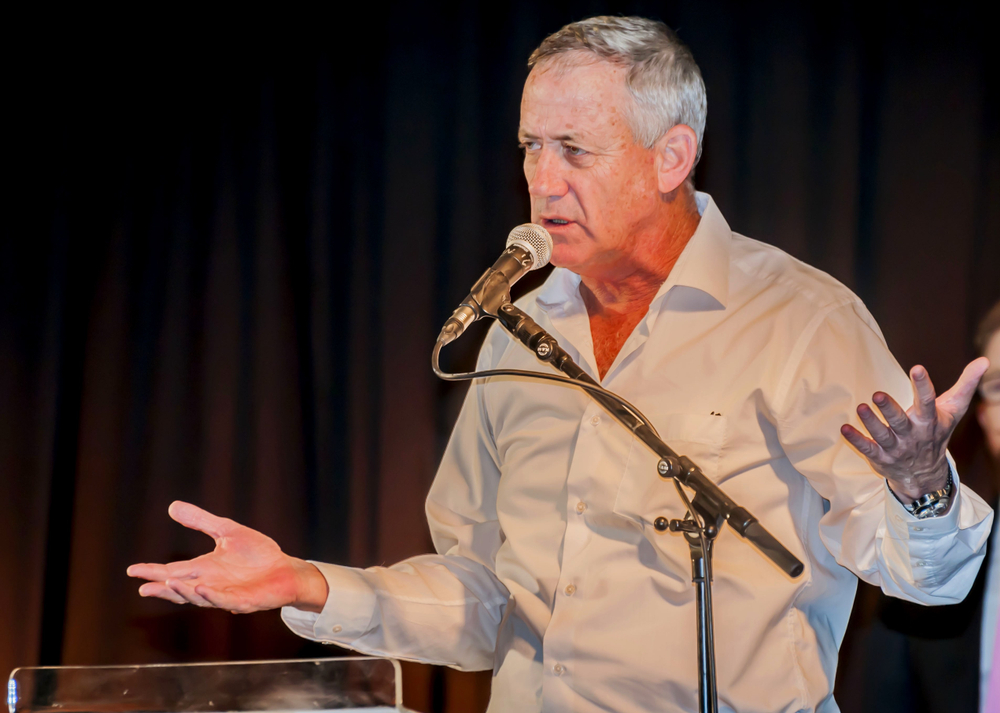by Mitchell Plitnick
On Tuesday, Israel held its second national election this year. With most of the ballots counted, neither Benjamin Netanyahu’s Likud coalition nor Benny Gantz’s Blue and White grouping had enough support for their parties and their natural allies to form a new government. The absentee ballots and those of the active military are still due to be counted, so there might yet be some minor changes in the final tally, but it will not be enough to grant either of the largest parties a majority coalition.
Israeli President Reuven Rivlin has the job of deciding how to proceed. He can tap the leader of any party to try to form a majority or he can try to work out an arrangement for a government of national unity between Likud and Blue and White, among other options. What he will do remains a mystery, as there is no obvious and clear path to the next government.
The reason for the impasse is the same as it was back in April—Avigdor Liberman, leader of the Israel Beiteinu party. His refusal to join Netanyahu’s coalition in April, unless Netanyahu stepped down and allowed for a government of national unity, eventually led to this second round of elections, and his stance is not only unchanged, his party picked up four more Knesset seats, so his position is even stronger now.
So was it all for naught?
Not quite. While the next Israeli government is unlikely to materialize for some time, and when it does, its basic policies are unlikely to be very different than they have been for the past years—even if, as seems likely at the moment, Netanyahu is finally ousted—this election established some important facts that should not be overlooked. Here are a few of them.
Netanyahu’s Time Seems to Have Finally Run Out
It is unwise to count Netanyahu out. He’s proven to be a grand master of the art of political survival. And if he leaves office, the likelihood is he will end up in jail on corruption charges, so he’s desperate to hang on and will probably stop at nothing if he thinks it will keep him safe from prosecution for a while longer. But he doesn’t have a lot of options. Most of his fellow Likud lawmakers are looking for a way to get rid of him, as they are acutely aware of the damage he is doing to their party. Increasing numbers of right-of-center Israelis are tiring of him and his antics, which is part of why Likud lost four seats in this election despite having absorbed the Kulahnu party, which won four seats in April.
There is no clear scenario where Netanyahu remains prime minister. Liberman wants him out and is refusing to be in a coalition with the ultra-orthodox parties, meaning the only way to a majority for Likud is a national unity government. Unless he can persuade Liberman to change at least some of his demands, Netanyahu seems to have no escape hatch.
The So-Called “Center-Left” Did No Better
It’s a misnomer to call Benny Gantz’s Blue and White “centrist.” It’s a right-wing grouping, hardly even a coalition. The only thing holding it together is opposition to Netanyahu. It will likely dissolve quickly once the long-time prime minister is gone.
Former Netanyahu defense minister Moshe Ya’alon and former Israel Defense Forces Chief of Staff Gabi Ashkenazi join another former COS, Gantz, who kicked off his campaign by bragging about how many Palestinians he’s killed. They connected with Yair Lapid’s Yesh Atid party, which bills itself as centrist, but has shown otherwise, through actions like Lapid kicking off a campaign in a settlement and vowing not to share Jerusalem.
There is a lot of talk about Gantz’s triumph in pushing Netanyahu out, but in fact, he, his party, and the entire bloc from center-right (Blue and White) to Zionist left (Meretz, part of the Democratic Union) fared poorly, losing two seats since April if we exclude the mostly Arab Joint List—as Blue and White will very likely exclude them from any governing coalition they try to form.
Labor and Democratic Union Also Failed
The farthest left of the Jewish parties, Meretz, brought in Ehud Barak’s new party and imported rising liberal star Stav Shaffir from Labor, yet gained only one seat above what Meretz won in April by itself. The Labor party, which dominated Israeli politics from before there even was a state of Israel until 1977, and remained one of Israel’s top parties well into the 21st century, managed only six seats in April. It tried to tilt toward the right, eschewing a coalition with Meretz to join with the center-right Gesher party. That strategy failed, as they still have only six seats.
There’s a lesson here. Relatively left-wing parties do themselves no favors by leaning right. From all indications, Labor’s union with Gesher, and Meretz linking with Barak—both of which were attempts by parties seen as left-wing to attract more centrist voters by bringing in figures who would appeal to them—gained nothing, and may well have lost ground as a result. On the other hand, the Joint List rebounded from a split in April that turned off many of its voters and cost them three seats.
Major Impact of Arab Voters
The Joint List is going to be the third largest party in the Knesset again. Its leader, Ayman Odeh, would thus be the technical leader of the opposition, although right-wing parties, who will probably comprise the majority of the opposition to a unity government, are unlikely to treat him as such. Still, this election provides the Joint List—composed of the Arab-Jewish communist party Hadash and three Arab parties, Balad, Ta’al, and Ra’am—with a significant opportunity to start charting a course toward change in Israel. More than that, if there is no unity government, the only way Gantz can form a governing coalition is if the Joint List will either join it—something Gantz is not likely to ask for—or to “support it from the outside.” That would essentially mean supporting the government in key votes on certain topics, support that would likely earn the parties some favors from the government. Odeh hasn’t seemed warm to this idea but has not ruled it our either.
Turnout among the minority of Arabs under Israeli control who can vote—it is important to recall that 76% of Palestinians are not Israeli citizens so they have no input in choosing the government that controls their lives—was around 60%, after dipping below 50% in April. 81% are estimated to have voted for the Joint List, and the remainder helped the Blue and White coalition gain one, maybe even two additional Knesset seats. Some attributed this to Gantz spending some effort to campaign in Arab areas of Israel. Presumably, he did not brag about how many Palestinians he had killed during those appearances.
The Joint List took a strong social justice stance and not only brought out more Arab voters, they might have also drawn more Jewish social justice support as well. Odeh certainly thought that was the case. The Joint List campaign reached out to the Jewish sector and got support from some of the Jewish left outside of the Jewish parties, including an ad placed by Jewish academics just before the election urging Jews to vote for the Joint List.
Israeli columnist Nahum Barnea stated that the Joint List’s achievement should be measured not in the number of seats it won but in “its ability to build bridges to the mainstream of Israeli politics and society. It is unthinkable to continue to exclude and to humiliate forever 20% of the electorate. Their expectations in all that pertains to integration, influence and respect all emanate from the ground up. Those expectations have to be met somehow.”
Gantz seemed to recognize the significance of the Joint List’s performance, as he told reporters that he had called Odeh to congratulate him on the Joint List’s success, an unprecedented step. He indicated he would be having further conversations with Odeh and, while it is still hard to imagine Gantz offering the Joint List a place in his potential coalition, it is an indication of the impact the Joint List can have going forward. This too is unprecedented and is reason for a bit of hope.
The Joint List’s performance demonstrates that there’s real room for a truly progressive movement for full equality and full Arab-Jewish partnership in Israel, based on progressive values that include Palestinians under occupation. Not because of Gantz’s desperate need for the Joint List’s support, but because every Jewish Israeli who supported or voted for the Joint List is another reason to believe that Jews and Arabs can come together for the goal of full equality, and full rights for all.
A partnership born out of Jewish support for Palestinian parties calling for full Palestinian equality won’t win in the near future, of course, but it can draw some support right now and, by offering real hope and a genuine alternative, it can grow. It’s clearly a far better strategic alternative for progressive Israeli Jews as well as Palestinian citizens of Israel than trying to meld with figures to their right in a futile attempt to gather votes that aren’t there. It’s also clearly a path worthy of support from the outside.






Excellent analysis and insights.